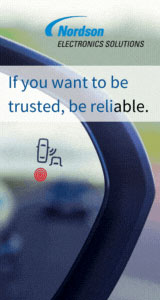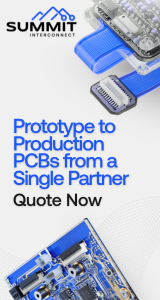|

|
|
| Ask the Experts | |||||||
|
|||||||
|
July 13, 2009 - Updated July 13, 2009 - Originally Posted Wave Soldering Fine Pitch Through Hole ComponentsWe are wave soldering very close pitch through hole components and see bridging. What is the finest pitch for through hole components that can be successfully wave soldered? Is there anything you can recommend we do to reduce bridging on this component? A. N. |
|||||||
| Expert Panel Responses | |||||||
|
Bridging of close thru-hole terminations has long been an issue in design and assembly practices. There are a number of major contributors to this that may yield better results. When you start to reach a 20-25 mill pitch the process will be more difficult to maintain. Machine parameters,
Eastern Manager Vitronics Soltec John Norton started his soldering career in 1983 for Hollis Engineering. He has also worked with Electrovert as a technical training manager and Vitronics Soltec for the last ten years. He has held various technical development and sales positions.
We have seen very tight pitch wave soldering when the MS2 material is used on the solderpot. The MS2 works as a dross eliminator and allows the solder to wet and flow much better. The MS2 is available from PK Metal. Larry Kay is the contact.
President/Senior Technical Consultant Foresite Mr. Munson, President and Founder of Foresite, has extensive electronics industry experience applying Ion Chromatography analytical techniques to a wide spectrum of manufacturing applications.
The article can be found in an of SMT Magazine titled Intrusive Reflow of Lead-Free Solder Paste.
Vice President Technology Photo Stencil For over 18 years, Dr. Coleman has been the vice president of technology for Photo Stencil, working closely with customers to understand their printing requirements. His efforts have resulted in several new stencil products.
|
|||||||
| Submit A Comment | |||||||
|
Comments are reviewed prior to posting. You must include your full name to have your comments posted. We will not post your email address. |
|
Free Newsletter Subscription
Circuitnet is built for professionals who bear the responsibility of looking ahead, imagining the future, and preparing for it. Insert Your Email Address |
|

|




